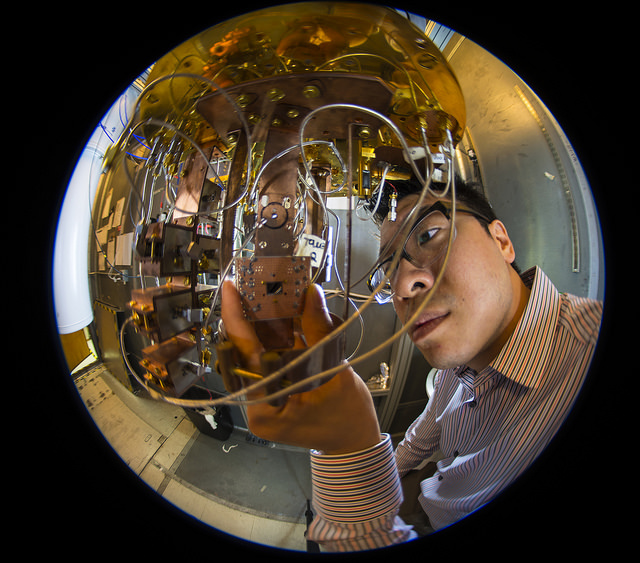 EMERGING TECH
EMERGING TECH
 EMERGING TECH
EMERGING TECH
 EMERGING TECH
EMERGING TECH
Computer scientists at Microsoft Corp. have designed a computing language for quantum computers, despite the fact that quantum computers don’t actually exist yet.
Microsoft describes the language as assisting it on its “path to building the first topological qubit, a robust type of quantum bit that … will serve as the basis for a scalable, general purpose quantum computer system – and mark a profound breakthrough in the field of quantum physics.”
If that makes no sense to you whatsoever, don’t feel bad because even Microsoft founder Bill Gates can’t explain it either. “I know a lot of physics and a lot of math. But the one place where they put up slides and it is hieroglyphics, it’s quantum,” Gates is quoted as saying in an interview.
Current Microsoft Chief Executive Officer Satya Nadella can’t explain it either, responding to the question of “could you explain quantum computing in one sentence” in the same interview that “I don’t think so. I wish I could.”
Quantum computing remains largely theoretical at this stage and, like the term artificial intelligence, is bandied about by companies that haven’t got the memo that we haven’t hit singularity yet. But generally it’s a computing process that takes advantage of the ability of subatomic particles to exist in more than one state at any time. In quantum computing, binary digits or bits, which even someone with only scant knowledge of computing would recognize as zeros and ones, both exist at the same time as opposed to being processed separately.
The programming language, integrated with Visual Studio and designed to work on both a quantum simulator and a quantum computer, is described by Microsoft as offering a full-stack solution to the theoretical process.
“The same code that you’re running today in simulation you can run tomorrow on our quantum computer,” Microsoft’s Krysta Svore said in a statement. She added that the “new tools are designed for developers who are interested in being on the cutting-edge of computer advances – the same type of people who were early adopters of machine learning and other artificial intelligence advances.”
More details on Microsoft’s quantum computing efforts are available here.
Support our open free content by sharing and engaging with our content and community.
Where Technology Leaders Connect, Share Intelligence & Create Opportunities
SiliconANGLE Media is a recognized leader in digital media innovation serving innovative audiences and brands, bringing together cutting-edge technology, influential content, strategic insights and real-time audience engagement. As the parent company of SiliconANGLE, theCUBE Network, theCUBE Research, CUBE365, theCUBE AI and theCUBE SuperStudios — such as those established in Silicon Valley and the New York Stock Exchange (NYSE) — SiliconANGLE Media operates at the intersection of media, technology, and AI. .
Founded by tech visionaries John Furrier and Dave Vellante, SiliconANGLE Media has built a powerful ecosystem of industry-leading digital media brands, with a reach of 15+ million elite tech professionals. The company’s new, proprietary theCUBE AI Video cloud is breaking ground in audience interaction, leveraging theCUBEai.com neural network to help technology companies make data-driven decisions and stay at the forefront of industry conversations.